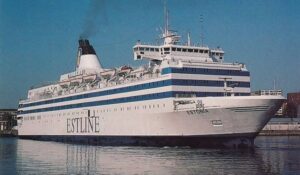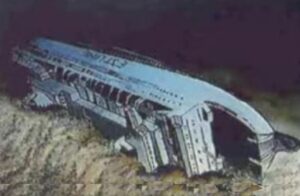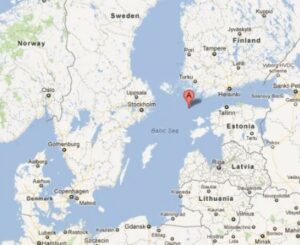
 I love to ride on the Ferry boats in Washington state. It’s especially cool to have your car right there with you at the end of your journey. You just get in and go off to the rest of your adventure. Of course, a Ferry boat is just that…a boat, and that always leaves the possibility of one sinking. That has happened on numerous occasions. It seems to me though that most of the time when they sink, it is in open waters, and not the inland waters, such as the Puget Sound.
I love to ride on the Ferry boats in Washington state. It’s especially cool to have your car right there with you at the end of your journey. You just get in and go off to the rest of your adventure. Of course, a Ferry boat is just that…a boat, and that always leaves the possibility of one sinking. That has happened on numerous occasions. It seems to me though that most of the time when they sink, it is in open waters, and not the inland waters, such as the Puget Sound.
One such maritime disaster in open waters, occurred on September 28, 1994, when a large car-and-passenger ferry…MS Estonia, sank in the Baltic Sea, killing 852 people. MS Estonia was a cruiseferry built in 1980 at the West German shipyard Meyer Werft in Papenburg. The ship was sold to Nordström and Thulin in 1993, for use on Estline’s Tallinn–Stockholm route. Estonia departed slightly behind schedule that night, departing at at 7:15pm on September 27. It was expected in Stockholm the next morning at about 9:00am. The ship was carrying 989 people, which included 803 passengers and 186 crew. The seas were rough that night, and it was determined by a 1997 investigation, that the ship’s bow door locks had failed during the storm. However, new underwater footage appears to show a previously unrecorded 13-foot hole in the ship’s hull. Given that information, many people think that it might have been a Russian torpedo that took down the MS Estonia. Whatever the case may be, the sinking of Estonia was one of the worst maritime disasters of the 20th century.
The main reason for the new theory is that Estonia was traveling on an overnight cruise from Tallinn, the capital city of Estonia, to Stockholm, Sweden, when it sank off the coast of Finland. Estonia is a former Soviet republic that gained its independence in 1991, but the last Russian troops actually left in 1994. Tallinn was a popular and affordable travel destination for Swedes. The Estonia was a type of ferry known as a “ro-ro,” which featured a smorgasbord, live music, dancing and drinking, and allowed people to drive vehicles onto one end of the ship and drive off on the other end.
There is no doubt that the stormy weather played a part in the disaster, because in the storm, the waves reached an estimated 15 to 20 feet. The Estonia went down in the middle of the night. It went down so quickly, that many passengers were trapped inside the ship. Some were able to escape and managed to make it into lifeboats. Some of those later drowned in the frigid water or died from hypothermia. Out of the 989 souls on board Estonia, only 137 survived, most of those were rescued by helicopters.
Officially, a joint Swedish-Finnish-Estonian government committee ruled it an accident and blamed it on stormy 
 weather that caused water to pour through an open bow door and into the Estonia’s car deck, destabilizing the ship and capsizing it in less than an hour. Nevertheless, there were others, including some family and friends of the Estonia victims, who believed the sinking was the result of a pre-existing hole caused by a collision or explosion. I don’t suppose that the full truth will ever be known, but the loss of life will forever be felt.
weather that caused water to pour through an open bow door and into the Estonia’s car deck, destabilizing the ship and capsizing it in less than an hour. Nevertheless, there were others, including some family and friends of the Estonia victims, who believed the sinking was the result of a pre-existing hole caused by a collision or explosion. I don’t suppose that the full truth will ever be known, but the loss of life will forever be felt.


Leave a Reply